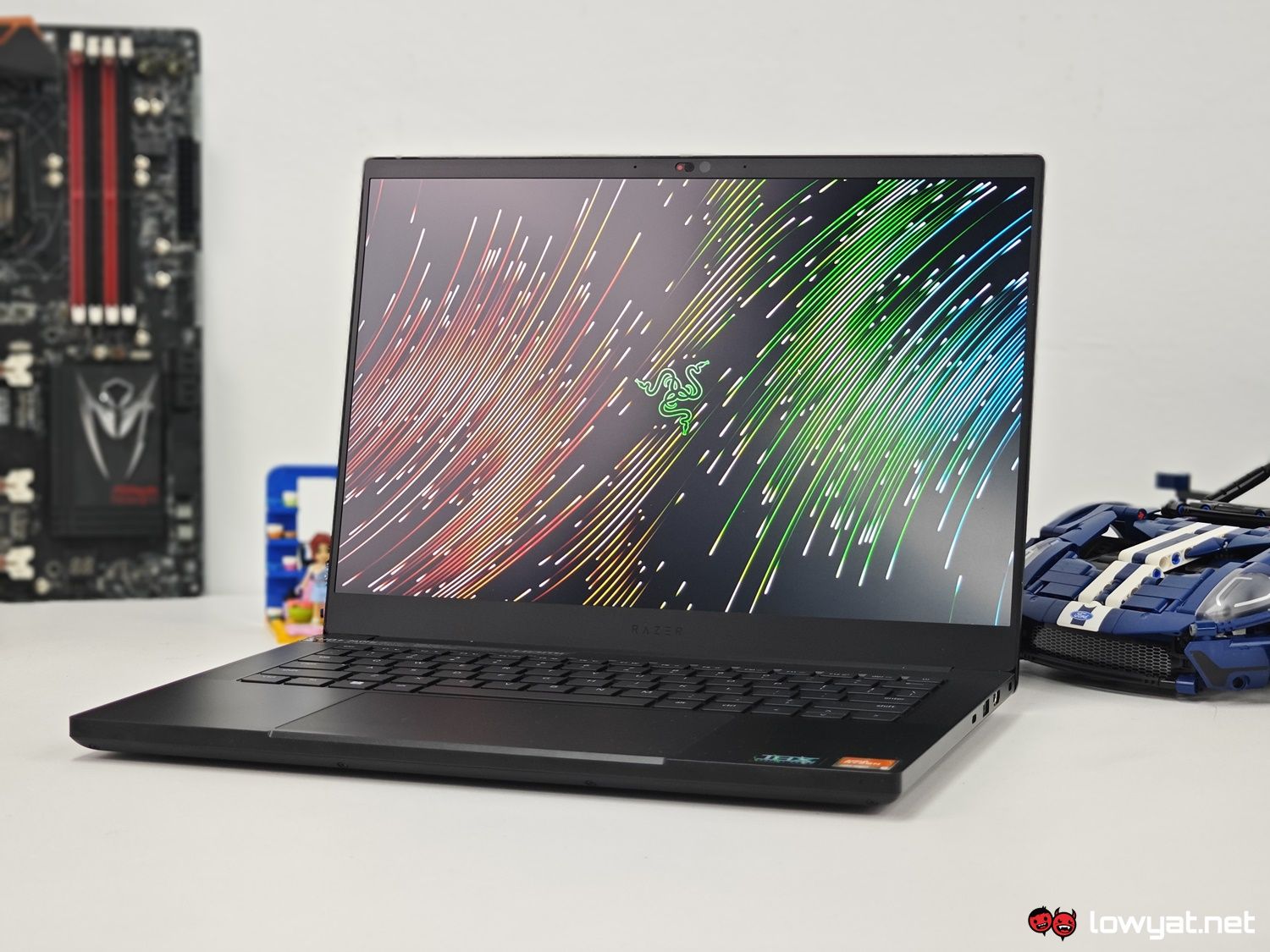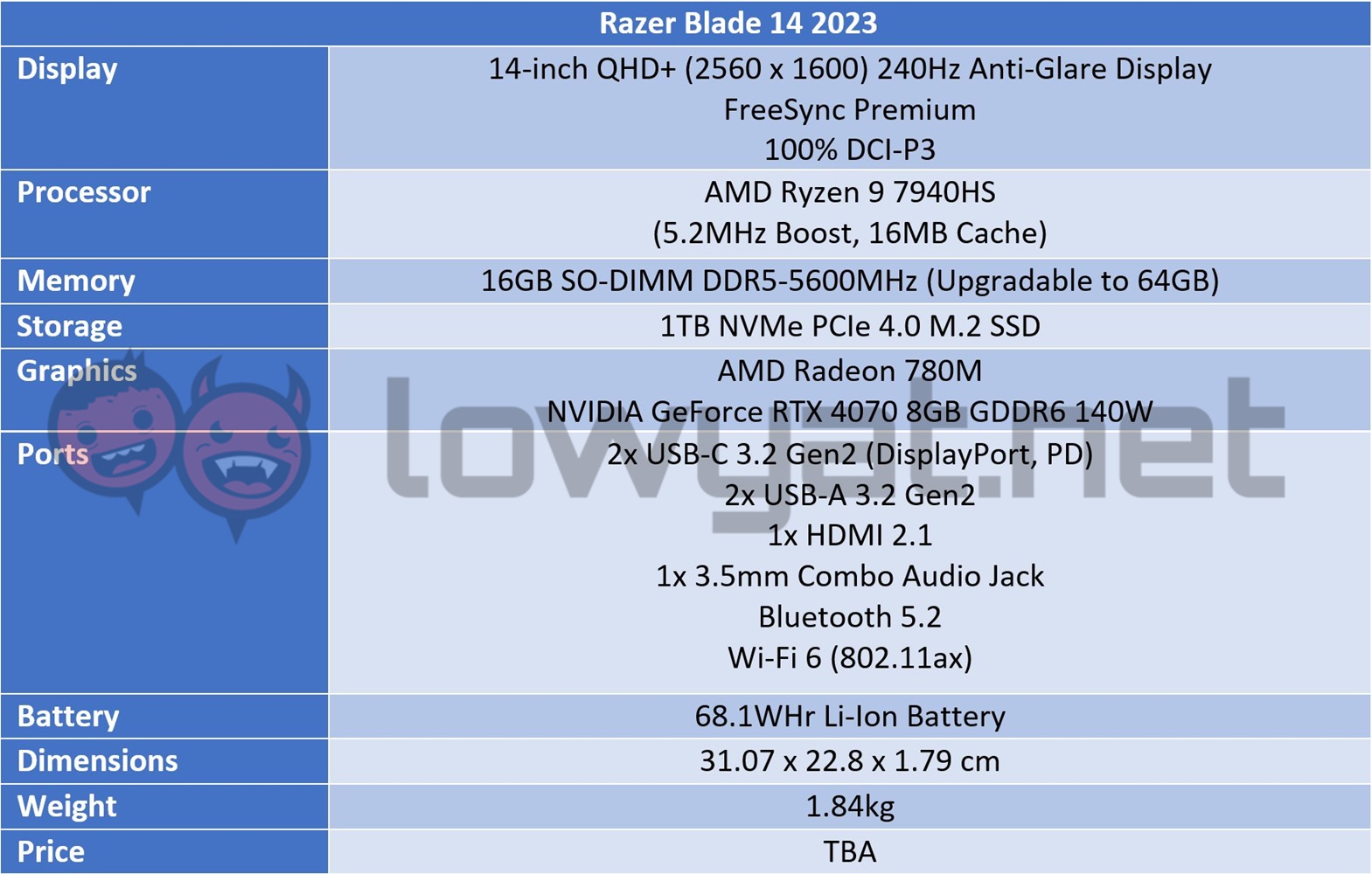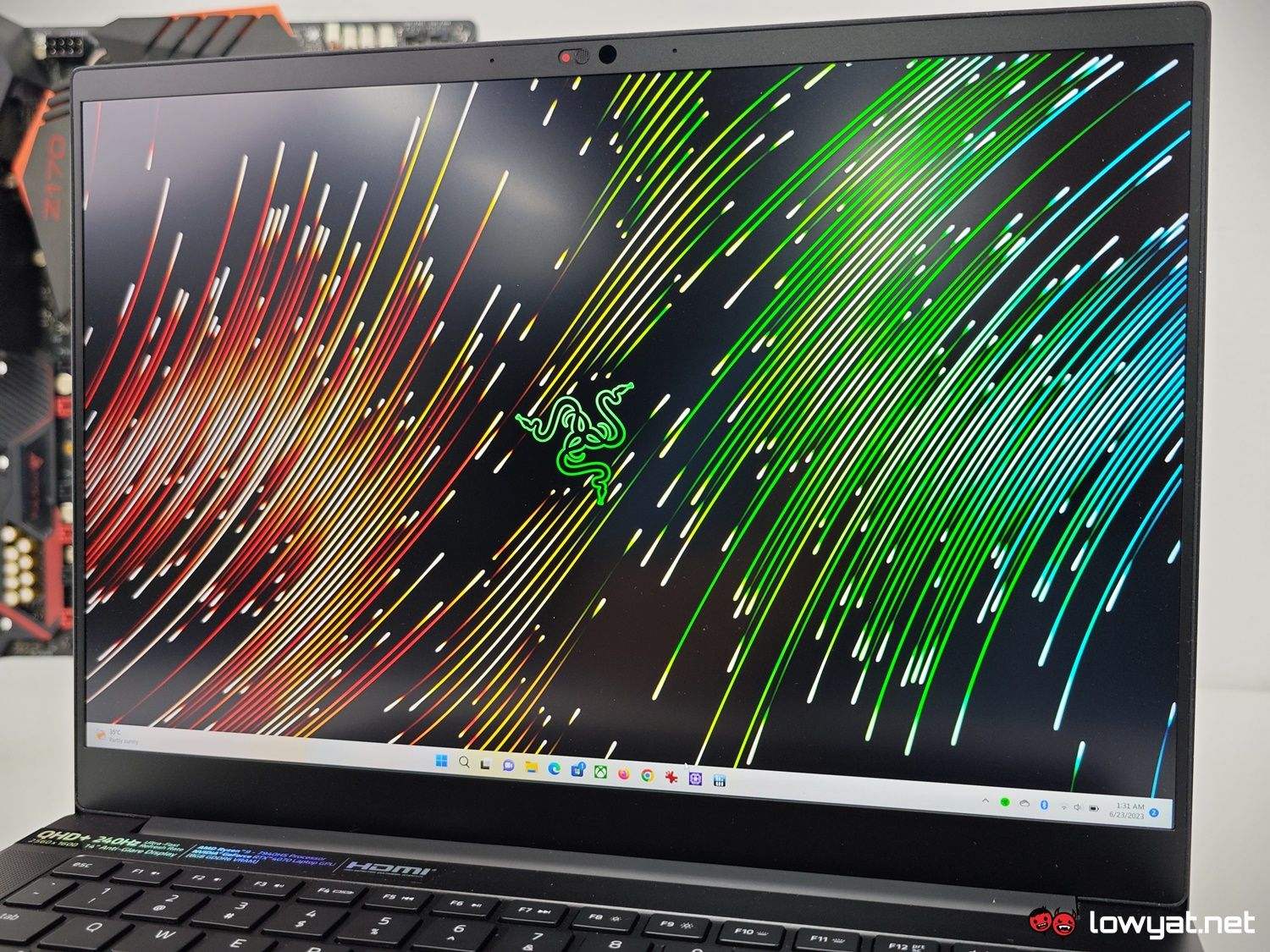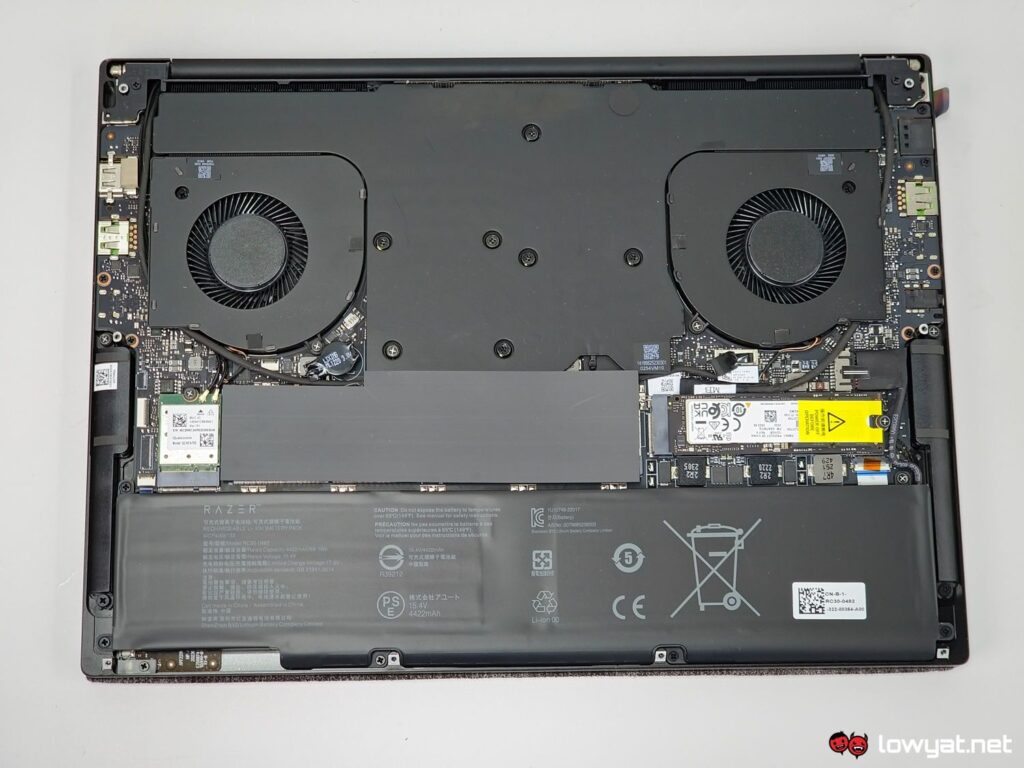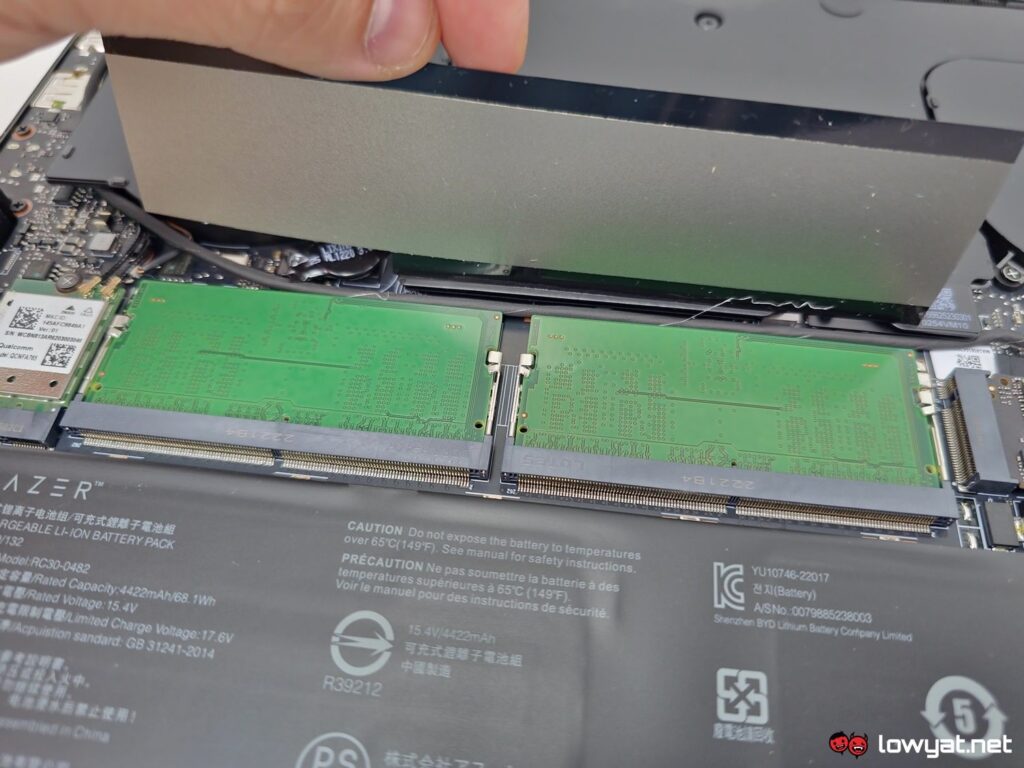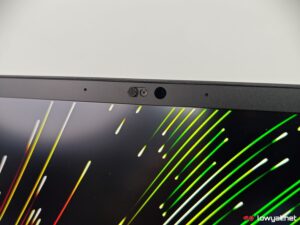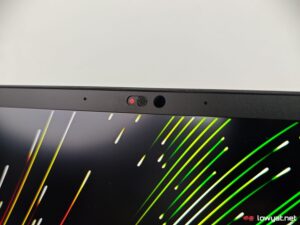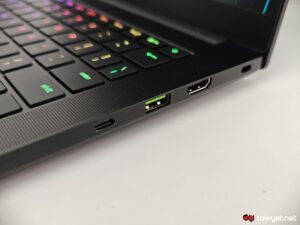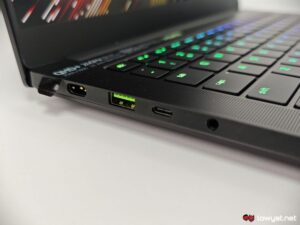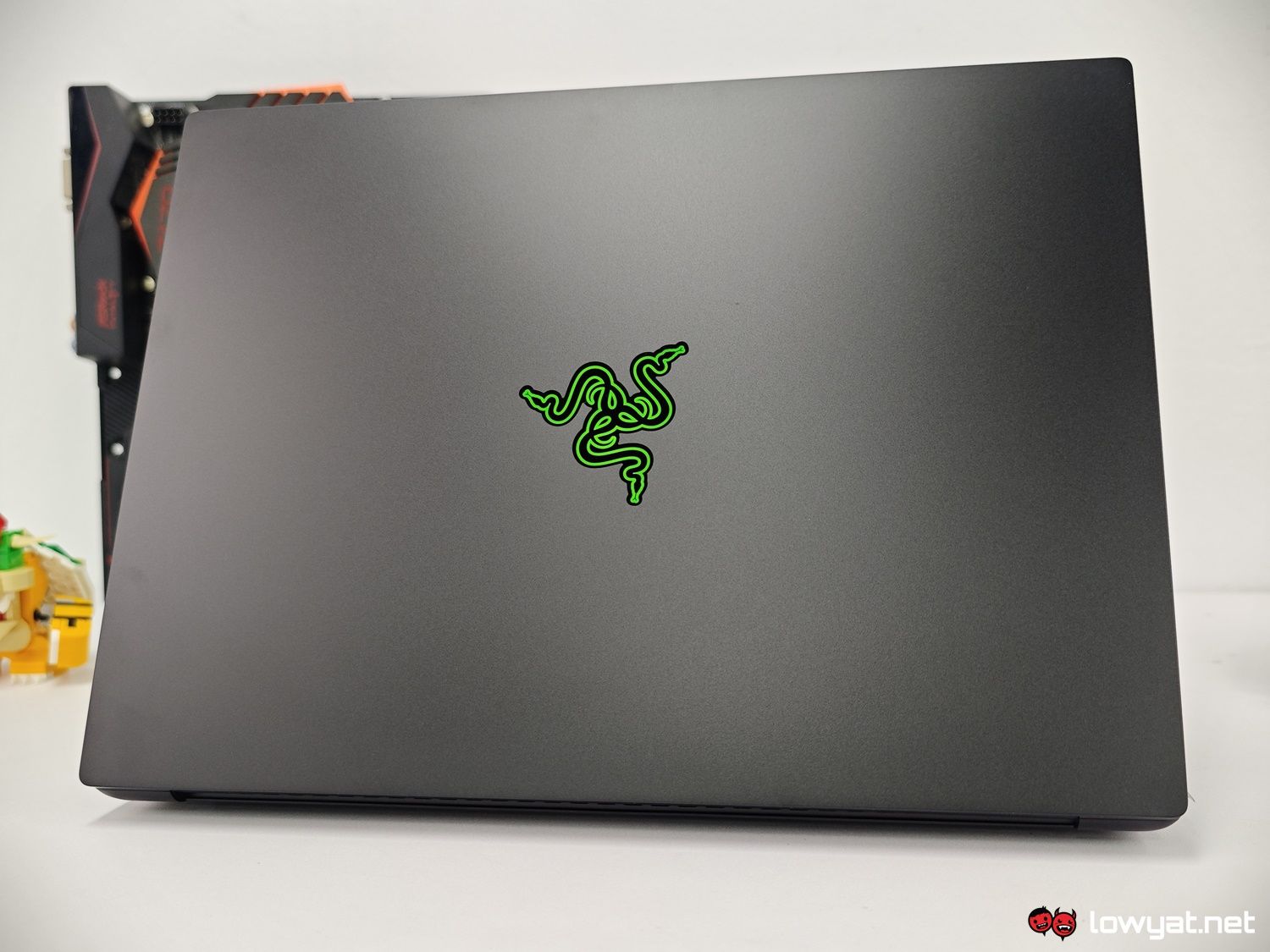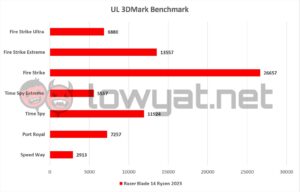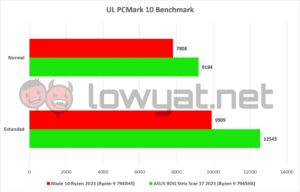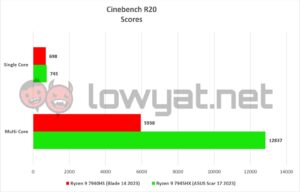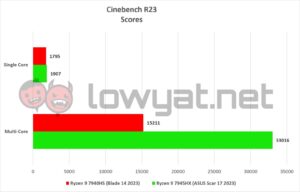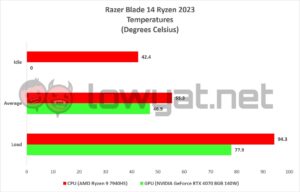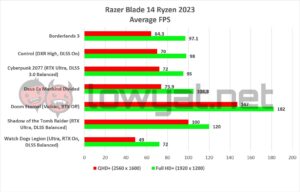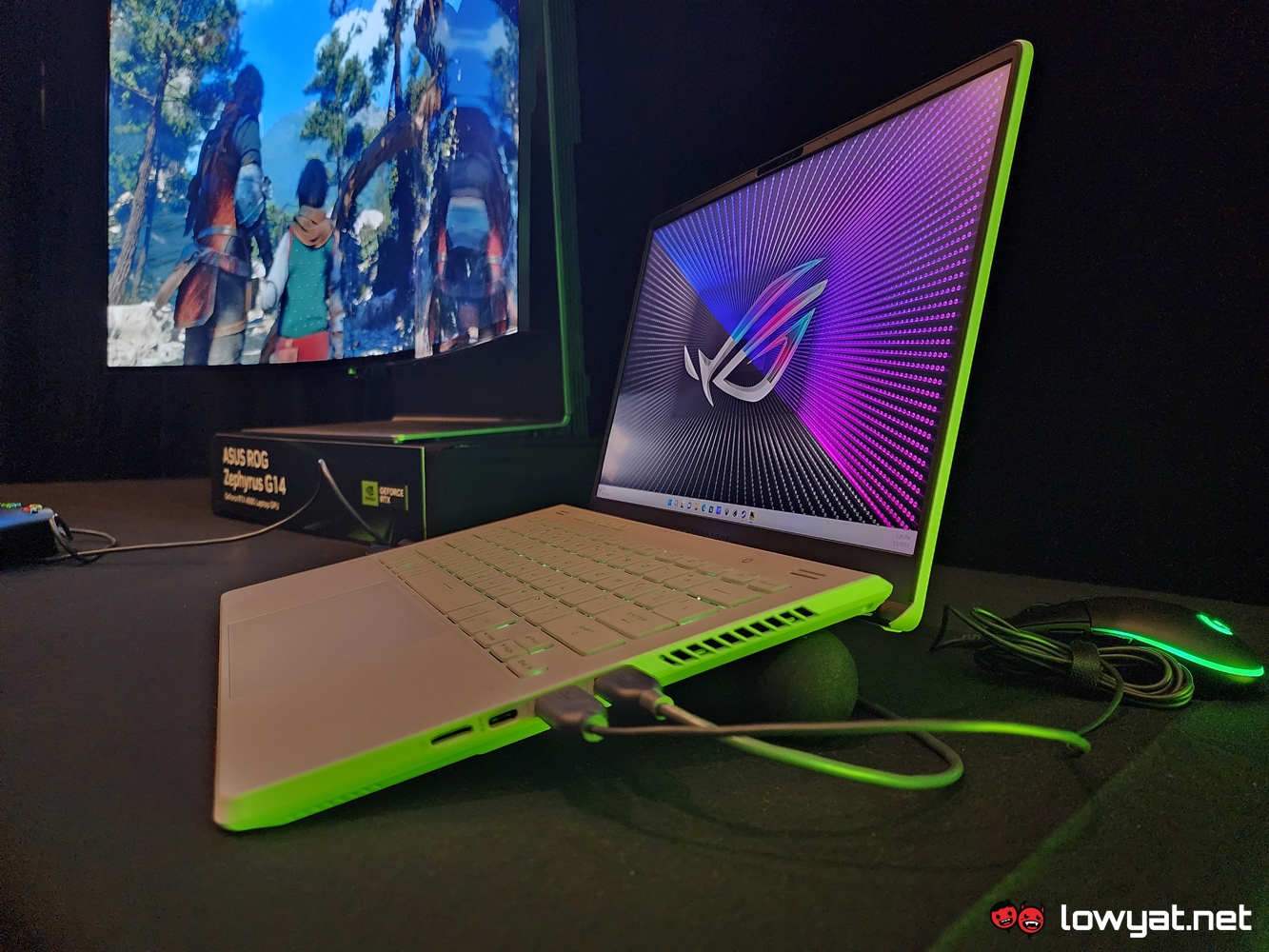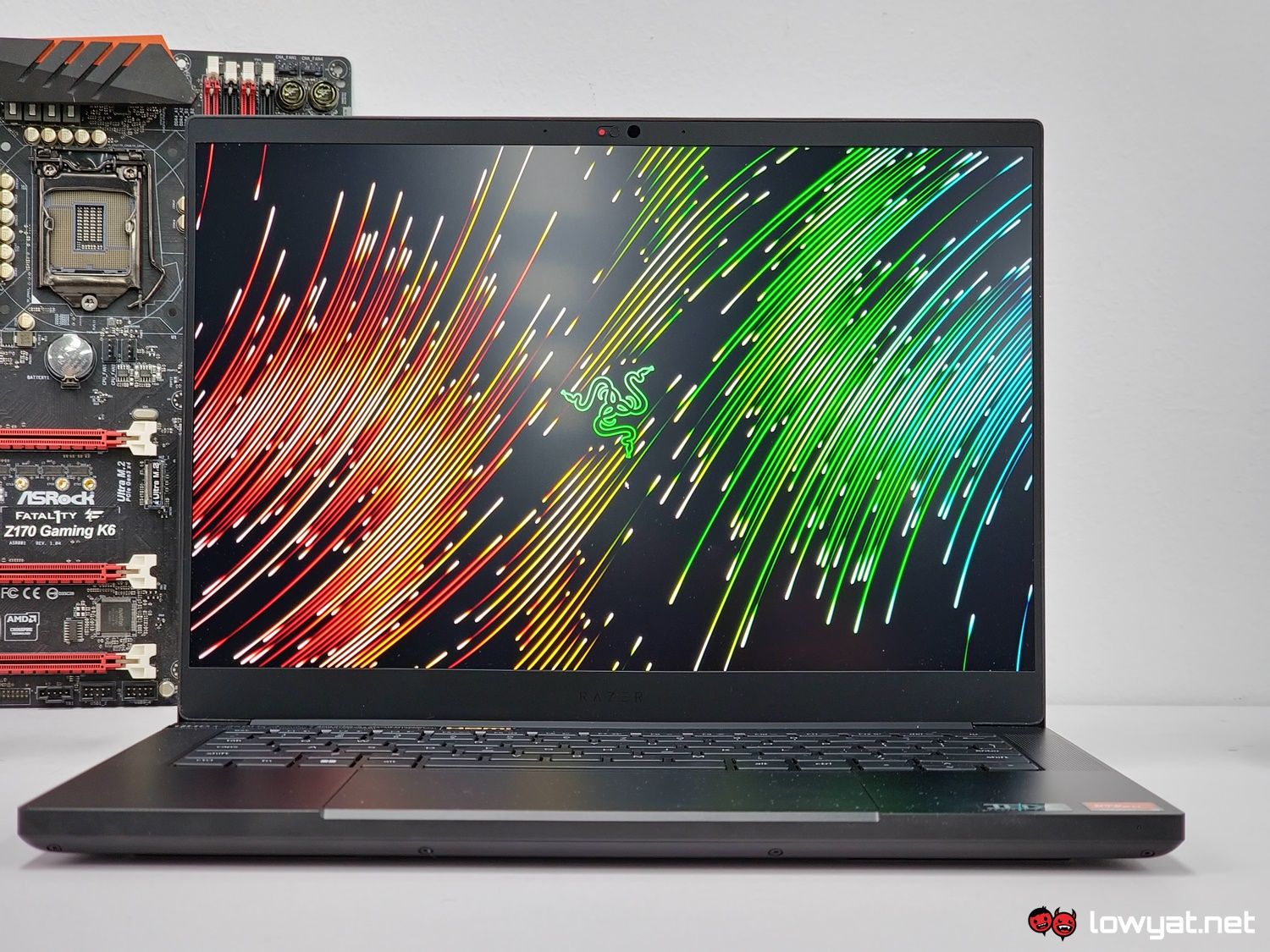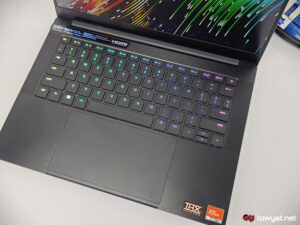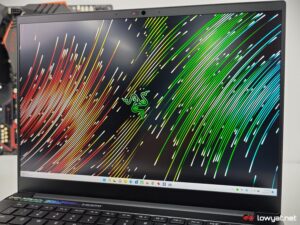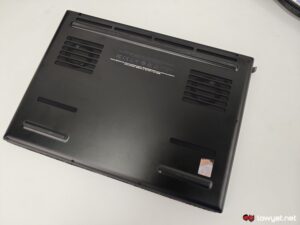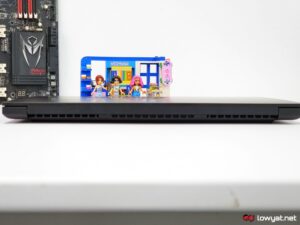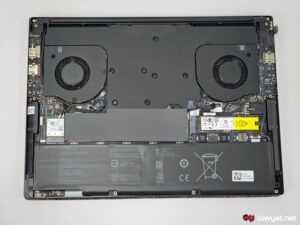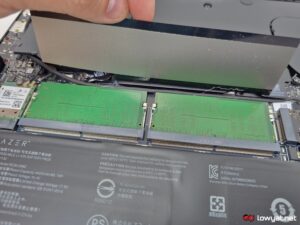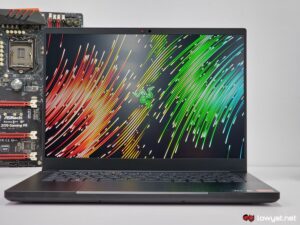When it comes to 14-inch gaming laptops, the market is really only limited to two machines: the Razer Blade 14 and the ASUS ROG Zephyrus G14. The former recently received a refreshed, dubbed simply as the Blade 14 2023 and like its predecessors, it’s a laptop with the capability to run like a bat out of hell.
As with all refreshed models, the Blade 14 2023 has been updated with the latest components and in this case, that comprises AMD’s newly launched Ryzen 9 7940U mobile CPU and an NVIDIA GeForce RTX 40 Series discrete graphics, among other things.
Specifications
Looks & Functionality
I’ve said it before and I will say it again: When it comes to design, it’s hard to argue with the CNC-milled, clean-cut aesthetics of Razer’s laptops. The Blade 14 2023, much like its predecessors and current counterparts, is a testament to the whole “if it ain’t broken, don’t fix it” philosophy that the brand very clearly employs. Naturally, there are some changes to the laptops, both from a physical and quality-of-life perspective.
AMD Ryzen 7040U Series in the house.
I’ll start with the internals. The Blade 14 2023 is one of the first laptops on the market that is running with AMD’s Ryzen 7040U Series CPUs and more specifically, the top-of-the-range Ryzen 9 7940HS. The only other laptop that can claim that honour of the 7040U Series is the Acer Swift Edge 16, a laptop that I personally saw and experienced briefly at Computex 2023 this year. Compared to the HX Series CPUs, AMD touts these new model to be even more energy efficient, but just as powerful too.
Speaking of power, the Blade 14 2023 is also the first laptop in Razer’s 14-inch lineup to be fitted with NVIDIA’s GeForce RTX 40 Series discrete graphics. This unit, in particular, is rocking an RTX 4070 with a TGP of 140W, and that is the highest configuration for this 14-inch laptop.
Perhaps the more surprising change on the inside of the Blade 14 2023, though, is the expansion option for the laptop’s memory. Our review unit comes with 16GB DDR5-5600 RAM, but this time around, it isn’t soldered onto the PCB – that makes it the first 14-inch laptop on the market to do this, by the by – so you can swap it out or expand it to a maximum capacity of 64GB. On a slightly related note, this change in engineering application does increase the overall thickness of the laptop, as well as increase its overall weight by several grams.
Sadly, the expansion option doesn’t expand to the storage segment and you’re still stuck with the 1TB PCIe NVMe Gen4 M.2 SSD. Technically speaking you can swap out the SSD for a higher capacity model, but that means you’re either going to have to mirror the contents from the stock SSD or a fresh install of Windows on it.
16:10 aspect ratio comes to the Blade 14.
Moving on, there are just as many improvements done on the exterior of the Blade 14 2023. I’ll start with the display: it still measures in at 14-inch and some features from the previous model, such as the 240Hz refresh rate, have been carried forward. What has changed is the new 16:10 aspect ratio and QHD+ (2560 x 1600) resolution, therefore providing the laptop with more display real estate. For another matter, it’s also brighter and more colour accurate than past models and rightly so, considering it has a DCI-P3 colour accuracy of 100%.
Even the trackpad has been enlarged and takes up about a third of the base of the Blade 14 2023. Gliding my fingers across the larger surface feels comfortable and effortless, although tapping to execute could still use a bit of tweaking, especially since it requires more than the initial taps to register. As for the keyboard, the key actually looks a little more solid and have been raised ever so slightly. I don’t know how else to describe this but compared to the 2021 and 2022 models, the keyboard on the new model actually feels more responsive, and even has more tolerant key travel and actuation.
Another small yet welcome creature comfort that the Blade 14 2023 provides is a shutter manual shutter for its webcam. This is clearly Razer taking a page out of Lenovo’s book on privacy and honestly, it’s really a convenient feature to have for myself, even if it isn’t that big of a deal. Another little detail that I love about the laptops’ chassis is how Razer precision drilled the speaker grille, making it look like a seamless part of the entire machine.
The number of ports of the Blade 14 2023, like its predecessors, remains the same but with some improvements too. Basically, the two USB-C ports are USB4 now, meaning that they support much higher bitrate transfers – up to 40GBit/s – and PD charging and as I usually find myself doing, charging the laptop through said ports and via my 120W GaN charger, whenever I don’t want to haul around the laptop’s provided adapter.
Performance & Battery
To provide a slightly better understanding of the performance of the Ryzen 9 7940HS inside this Blade 14 2023, I am including the performance metrics of the Ryzen 9 7945HX that I obtained from another laptop, at least for the benchmarks that focus on CPU performance. Again, the 7940HS is meant to be more power efficient but again, that doesn’t necessarily mean that it’s a slacker.
As I said at the start, the combination of the Ryzen 9 7940HS APU and the RTX 4070 allows the Blade 14 2023 to deliver a pleasurable and very acceptable gaming experience. From a synthetic standpoint, the components provide a marked improvement over last year’s Blade 14, albeit at the cost near scorching temperatures across the base. That said, the heat is not as high and a lot more manageable, but even then, I suspect it is because of the lab’s ambient temperature.
As for the gaming side of things, the Blade 14 2023 is able to deliver the frames, both effortlessly and consistently. Across the board, the RTX 4070 and 7940HS are able to keep the average framerate for all benchmark titles above the 60 fps at QHD+ resolution, save for Watch Dogs Legion and Cyberpunk 2077 with path-tracing on. With the latter title, the machine peaks at 45 fps and dips every so often, and that is with DLSS 3.0 active.
More importantly, and unlike Razer’s Intel-powered Blades, the Blade 14 2023 doesn’t suffer from that weird stuttering that plagued last year’s Blade 15, as well as this year’s newly launched 16-inch model. Quite the opposite, this laptop delivers a smooth and seamless experience throughout but again, the heat does tend to spread across the base.
Those long, long legs on the battery.
Then there’s the battery life of the Blade 14 2023. It’s got a slightly larger 68.1Whr battery, which honestly as impressive as 80Whr or 95.2Whr batteries. But like the Blade 14 models of yore, and coupled with the new power-efficient Ryzen 7040U Series , it’s does a damn sight better job at maintaining its battery endurance. On average, it takes a good 9.5 hours – 10 hours, if I really stretch it – for the battery to run completely flat, and that’s if I use it continuously throughout the day for a variety of tasks, including writing articles, checking the mail, and the occasional video from YouTube, Facebook, or Netflix even. It is, quite honestly, one of the best energy-efficient Windows-based gaming laptops I’ve used to date but at the same time, and to be realistic, it’s still nowhere close to what a MacBook can do.
Competition
ASUS ROG Zephyrus G14 2023
In the world of 14-inch gaming laptops, the Zephyrus is practically the only competitor to the Blade 14 2023. In fact, ASUS was technically the first brand to launch said lineup back in 2020. Today, the top-of-the-line SKU for the laptop for our market is equipped with similar specs: we’re looking at the 7940HS processor, but a lower-tier RTX 4060 with a 125W TGP, up to 32GB DDR5-4800 RAM, and a 1TB PCIe Gen4 SSD.
Its 14-inch display used ASUS’ own Nebula HDR panel, which really is just another name for Mini LED. That too has a QHD+ resolution with a maximum refresh rate of 165Hz, and is G-Sync Compatible. Oh, and it’s got the AniMe Matrix LED panel at the back, although that’s really more for aesthetics.
Conclusion
If there is one thing I will give Razer credit for, it’s that the brand is consistent. Three generations on, and my experience with Blade 14 2023 feels just as solid as when I first reviewed its progenitor. Once again, much like its predecessors, the Ryzen 9 7940HS has proven itself as one hell of a power efficient processor, and there really wasn’t any doubt that the RTX 4070 would deliver a great gaming experience, although as a last minute observation, I think 140W may be a tad bit overkill. Especially when an RTX 4090 Mobile can run at full whack on just 125W.
The Razer Blade 14 2023 and its prowess can be summed up in one word: Consistency.
At this stage, the Blade 14 2023 is arguably still one of the best 14-inch gaming laptops on the market, and Razer has done a pretty bang up job in striking a balance between power, performance, and battery life. As I said before, it’s no MacBook Air but again, this is a compact, high-performance gaming machine.
The only drawback I can think of to owning the Blade 14 2023 is its asking price: with a starting price of US$2399 (~RM11,116), you really are paying a premium for this machine. On that note, I still haven’t received word about local availability and pricing, but I have reached out to the brand for said information and will update you accordingly when I have it. Having said that, if you’re not deterred by the absurd price tag and you are in desperate need for a 14-inch powerhouse, consider this model.
Photography by John Law.
Follow us on Instagram, Facebook, Twitter or Telegram for more updates and breaking news.


